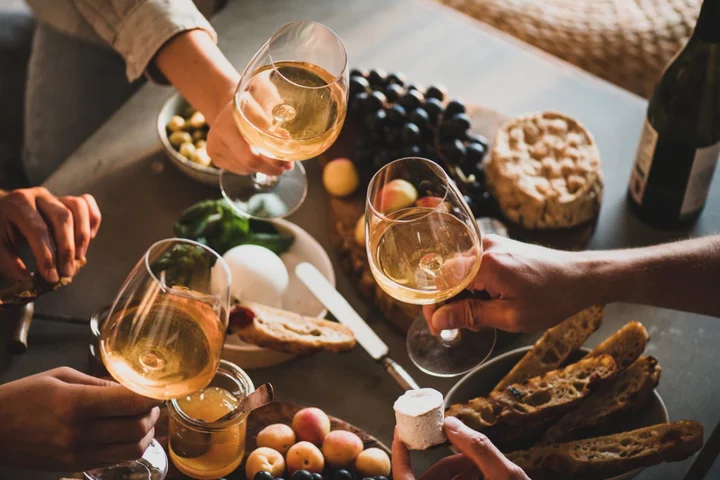
Brits pay more for wine when trying to impress guests, survey finds
Wine drinkers typically spend £9 on a bottle for themselves but £12.50 when hosting – to impress their guests with a pricier plonk. A poll of 2,000 wine drinkers found 44 per cent splash out when hosting at Christmas, with this rising to 56 per cent when gifting to someone else, as 27 per cent still think premium labels are better quality. While three-quarters will do so because they want an expensive bottle to celebrate a special occasion and 35 per cent want to impress their guests. However, 23 per cent admit they find buying wine a stressful experience – with 51 per cent of these claiming there are too many options to choose from. And 46 per cent don’t know how to identify a good bottle from a bad, whereas 32 per cent are simply bewildered by wine jargon. The research was commissioned by Lidl GB, to mark the return of its Chateaux Noir events, which are designed to democratise wine and challenge preconceptions about wine etiquette through a tasting experience in total darkness. The sensory events will see the supermarket take on major drinks brands as it aims to dispel the belief drinkers need to blow the bank to enjoy quality booze. It also emerged 51 per cent of wine drinkers tend to stick to what they know, and 49 per cent choose a bottle based on where it comes from. Whereas 45 per cent will default to whatever is on offer, 23 per cent have a ‘go-to’ bottle, and 18 per cent will opt for whatever label they like to look of. However, 24 per cent wish they knew more about wine – with nearly a third saying they would experiment with different wines if they knew more about them. But while many are keen to experiment with wine, there are some rules they certainly won’t abide by. For 43 per cent, they are happy to serve white with a dish that isn’t fish, and 39 per cent will drink rose all year round. Many don’t mind if their bottle is corked or a screw top (37 per cent), and 35 per cent will drink champagne from any glass, not just a flute. More than three in 10 (31 per cent) will even chill a bottle of red and 30 per cent will pop a few ice cubes into their vino on a warm day. In fact, 31 per cent find ‘wine etiquette’ snobbish, with just eight per cent believing that following traditional ‘rules’ of wine etiquette enhances their enjoyment of the drink. The events will be hosted by Lidl GB’s master of wine, Richard Bampfield, and will see guests enter a ‘palate cleansing tunnel’ before a blackout wine tasting room. He said: “At Chateaux Noir, not only do we want to challenge preconceptions about affordable wine and prove to customers that great taste isn’t determined by premium branded price tags, but to open people’s minds and challenge what they think they know already about wine. “So, if you think you’re a strictly red drinker – think again. “We’ll reveal how similar flavour profiles can carry across different categories that you might never have otherwise considered. “This Christmas, Chateaux Noir is encouraging shoppers to rip up the rule book and start experimenting - ultimately, there is no ‘right’ or ‘wrong’ way to drink wine – if you love it, then that’s all that matters.” Over 18s can secure tickets for the Chateaux Noir events, which will take place in London, Glasgow and Liverpool in November, at, with all proceeds going to the NSPCC. Read More Brits are so fed up with emails that retail giants now send reminder letters Brits reveal advice they would give their younger selves - including investing in property Brits will eat over 5,000 slices of pizza in their adult life, study finds Beauty advent calendars 2021: Our guide to this year’s top treats 13 best tech gifts to spoil a gadget geek this Christmas 10 best luxury Christmas crackers for dressing up your dining table
2023-10-11 22:16

A $245 Billion Selloff Signals Less Sparkly Future for Luxury Stocks
The wealthy shoppers who fueled LVMH’s rise to Europe’s most valuable company and made its founder the world’s
2023-10-11 20:27
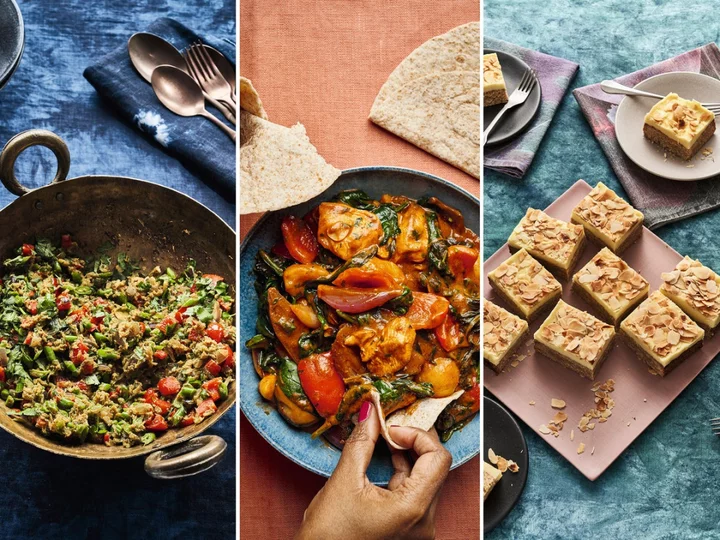
Spice up your life: Three recipes from Nadiya Hussain’s new book that bring the heat
I didn’t grow up eating crab, but I absolutely love the sweetness, which you can’t really get from any other seafood,” says former Bake Off winner Nadiya Hussain. “This natural sweetness is quite a wonder and it really does work well cooked with the slight crunch of the green beans and the simple spicing, making it a bhuna I cook time and time again.” Crab bhuna Serves: 4 Ingredients: Oil, for frying 4 cloves of garlic, crushed 2 red onions, finely diced 2 red peppers, finely diced 3 mild red chillies, finely diced 1½ tsp salt ½ tsp ground turmeric 3 tsp curry powder 180g green beans, finely sliced 3 x 145g tins of shredded crab meat in brine, drained Large handful of chopped fresh coriander Method: 1. Start with a large non-stick pan or wok and put it onto the hob over a high heat. Add the oil and as soon as it is hot, add the garlic and cook until golden. 2. Now add the red onion, red pepper and red chilli along with the salt, turmeric and curry powder. Add a splash of water and the green beans and cook till there is no liquid left. 3. Now add the shredded crab meat. As you add the crab meat, make sure you remove any excess moisture. A bhuna is meant to be dry so we want to avoid any excess liquid. Cook with the lid off over a high heat for 10 minutes. 4. Take off the heat, add the chopped coriander and mix through to serve. Saag aloo chicken jalfrezi “This is the kind of dish that you often see being served up at an Indian restaurant and while it may look complicated, it doesn’t have to be at all,” says Hussain. “This is like the Bengali stir fry you never knew you needed. It’s spiced, fast and a feast for the eyes.” Serves: 4 Ingredients: Oil, for frying 3 dried red chillies 4 cloves of garlic, thinly sliced 400g tin of cream of tomato soup 1½ tsp salt 4 tbsps brown sauce 4 tbsp art masala mix 2 red onions, quartered 2 red peppers, cut into large chunks 560g tin of potatoes, halved 200g cooked chicken 80g fresh baby spinach Handful of fresh coriander 2 spring onions, thinly sliced For the art masala mix: 28g cardamom pods 3g bay leaves 34g fennel seeds 100g cumin seeds or ground cumin 38g ground cinnamon 100g ground turmeric 44g chilli powder 200g curry powder Method: 1. To make the art masala mix, use a spice grinder. Lots of smoothie-makers also come with a milling blade that works well to really crush down these whole spices. Put the cardamom pods in the grinder, husk and all. Whack them in and blend to a fine powder, then pour out into a large bowl. Now put your bay leaves, fennel and cumin seeds into the same grinder and blitz to a powder. If your grinder is small, you can do each spice alone, but just note that when doing the bay leaves, always blend them with the fennel seeds. They need the seeds to get them moving enough to crush to a powder. Add to the bowl. Mix thoroughly, being sure to do this after each addition as it’s important to make sure that the mix is well-blended. Now for the cinnamon. I prefer to use ground cinnamon as it’s readily available and will save you from having to crush something quite hard – why should we if we don’t need to? Add to the bowl and mix. Chuck in the ground turmeric and mix. Add the chilli powder and mix. Lastly, add the curry powder and give everything a good stir. Transfer into a jar or jars and you are ready to go! 2. Put a large non-stick frying pan or wok over a high heat and drizzle a good amount of oil into the base. Throw in the dried red chillies and toast in the oil until they swell up. Lower the heat, add the garlic and toast till it turns a deep golden brown. 3. Pour in the tin of cream of tomato soup, add the salt, brown sauce and art masala mix and cook till the liquid thickens and is reduced by half. 4. Add the red onion, red pepper, tinned potatoes and cooked chicken and stir in the sauce on a really high heat until everything is coated in the sauce and catching on the base of the pan. Take off the heat and stir in the spinach until just wilted. 5. Serve the curry immediately with the coriander and spring onion sprinkled over. Milk fudge flapjack “This includes two of my favourite things and I have made their worlds collide,” says Hussain. “Flapjack – sticky, sweet and oaty – topped with a spiced Indian milk fudge. Why have one world when you can build a bridge between two?” Makes: 12 Ingredients: For the flapjack: 250g unsalted butter, plus extra for greasing the tin 180g golden syrup 180g caster sugar 500g porridge oats 2 tsp almond extract For the milk fudge: 60g unsalted butter 200ml double cream 60g caster sugar 6 cardamom pods 100ml condensed milk 250g semi-skimmed milk powder, blitzed in a processor to remove any lumps 100g toasted almond flakes Method: 1. For the flapjack, start by putting the butter, golden syrup and caster sugar into a pan and warming it all through until the butter has melted and sugar dissolved. Take off the heat. 2. Preheat the oven to 160C fan and line and grease the base and sides of a 20cm square cake tin. 3. Add the oats to a bowl, pour in the melted butter/sugar mix and add the almond extract. Stir the mixture till everything is well combined. Tip into the prepared tin and flatten, making sure to pat down so everything is well compressed. 4. Pop into the oven and bake for 30 minutes. When the flapjack is ready, it will be golden around the edges and lighter in the centre. Take out and leave to cool completely, then chill in the fridge so we have a firm base for our fudge to sit on. 5. For the milk fudge, put the unsalted butter, double cream and caster sugar into a pan and mix till the sugar has dissolved. 6. Crush the cardamom pods, remove the husks and crush the black seeds. Add to the sugar mix. Stir in and then add the condensed milk and semi-skimmed milk powder. Bring to a gentle simmer over a medium heat and keep stirring till the mixture is thick and coming away from the sides of the pan. 7. Spoon the mixture right on top of the flapjack and press into an even layer. Sprinkle over the toasted almond flakes and press them in. 8. Leave to cool in the tin and then leave to chill in the fridge. Cut into squares and they are ready. ‘Nadiya’s Simple Spices’ by Nadiya Hussain (Penguin Michael Joseph, £26). Read More Obsessed with Boursin? It’s the perfect way to elevate your leftovers Budget Bites: Three one-pan recipes that minimise on washing up How to cook to keep your gut healthy Three recipes from Michel Roux’s new fuss-free French cookbook Formula for the ‘perfect’ fish finger sandwich revealed Being vegetarian may partly be in one’s genes, study finds
2023-10-11 13:45

LVMH Sales Growth Slows as Global Luxury Demand Cools
LVMH’s sales growth softened in the third quarter as shoppers reined in spending on high-end Cognac and costly
2023-10-11 00:51
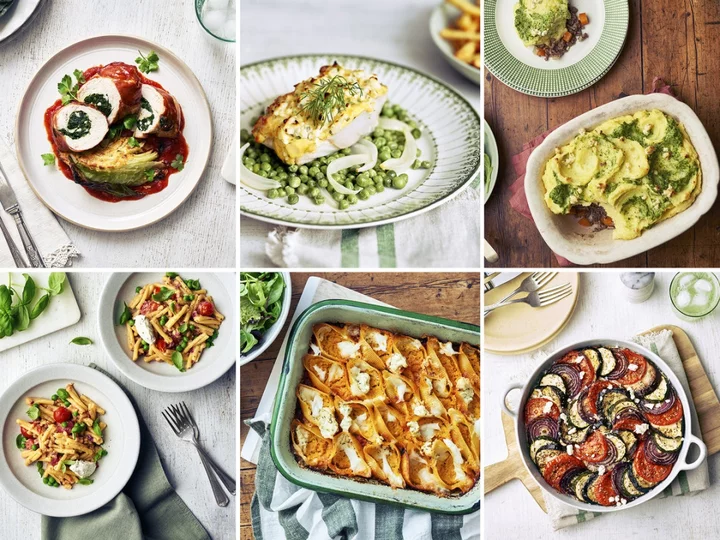
Obsessed with Boursin? It’s the perfect way to elevate your leftovers
We threw away 68,000 tons of perfectly good food over the summer. Let that sink in for a moment. Overstocking, the heat, spontaneous social plans and having less motivation to cook were some of the main culprits, according to new research by Boursin. The most commonly wasted ingredients included sad vegetables, soggy pasta, wilted salad leaves and stale bread. Surprisingly, chicken, fish and even cheese made the top 20 list of frequently wasted foods. In an effort to put a stopper in this cycle, Boursin has teamed up with Great British Bake Off star Manon LagreÌ€ve to serve up simple solutions for reducing food waste. Aimed at the 67 per cent of us who prefer to cook simpler and less time-consuming dishes through simple family friendly recipes, LagreÌ€ve’s recipes showcase how British culinary classics can be easily elevated with the nation’s favourite indulgent cheese, Boursin, and a unique French twist. So dig out the leftovers from the fridge, grab a pack of Boursin, and get cooking. Vegetable Provencal Boursian tian Serves: 4-6 Ingredients: 150g of dry rice 2 tbsp of Boursin Garlic & Herbs, plus 1 tbsp to top the Tian with 2 tbsp of olive oil 2 courgettes 1 aubergine 6 tomatoes 1 red onion 3 cloves of garlic 2 tsp of herbes de Provence Salt and Pepper Method: 1. Slice the aubergine and place face down in the tin, generously season with salt and leave to soak and release moisture. 2. Place the rice in a pan, with 300ml of water, ½ tsp of salt, cover and bring to boil. Once it is boiling, remove from the heat and leave for 10 minutes covered. 3. Wash and slice courgettes, tomatoes, onions and garlic. 4. Rince the aubergines, pat dry with a kitchen towel and brush with some olive oil. 5. Pre heat the oven to 180C fan oven. To assemble the Tian, drizzle some olive oil at the bottom of the tin, spread the cooked rice and crumble the 2 tbsp of Boursin on top. 6. Cover the rice with the vegetable slices, tomato, courgette, aubergine, onion, garlic then drizzle with olive oil, herbe de provence, and season well with salt and pepper. 7. Cook for 45 minutes to 1hour and serve hot! Almond and Boursin grilled cod, with frites and peas Serves: 4 Ingredients: 4 filets of cod, skin off 50g of shaved almonds 2 tsp of Boursin Garlic & Herbs 1 egg 1 tbsp of breadcrumbs Fresh chives 1kg of potatoes 45ml of vegetable oil 500g of fresh peas 1 medium onion 2 tsp of salted butter 3 garlic cloves 2 tbsp of mayonnaise 1 tbsp Boursin Garlic & Herbs Salt and pepper Method: 1. Start by peeling the potatoes and cutting them into thin French Fries. Place them in a large bowl of hot water and leave them to soak for 10 minutes. 2. Preheat the oven to 220C. 3. Rinse and pat dry. Add the vegetable oil, 1 tsp of coarse salt and mix with your hands. Transfer to a large roasting tin to create one layer. Put a timer on for 20 minutes. 4. In the meantime, prepare the crust by mixing the almonds, Boursin, eggs and the egg. 5. Slice the onions and place in a roasting tin with the peas, garlic and salted butter diced. Add the cod on top of the peas, season with salt and pepper then divide the crust and spread it on top of the cod. 6. Use a spatula to mix the French fries in the oven and place at the bottom of the oven, turn the temperature down to 210C and cook for 10 to 12 minutes. 7. Make the Boursin mayo and serve the fish on top of the peas, add some dill and the French fries. Voila! Creamy plant-based Boursin pasta (vegan) Serves: 4 Ingredients: 400g of dry pasta (or leftover cooked pasta) 100g of fresh peas cooked. 100g of pine nuts 300g of cherry tomatoes 1 pack of Boursin Plant-Based (130g) 2 tbsp of olive oil ½ red onion A small bunch of fresh basil Salt and pepper Method: 1. In a pan, fry the diced onions with the olive oil for a couple of minutes, then add the cherry tomatoes and fry for 3 minutes. 2. Use a spatula to pop in some of the tomatoes. Add the pine nuts and a couple of tbsp of water if needed. Season with salt and pepper and set aside. 3. Cook the pasta in salted water respecting the package instructions. 4. Remove the sauce from the heat, mix the Boursin in with a fork in a bowl, then add to the tomato sauce. Finally pour the just cooked pasta over the top. 5. Serve the pasta, top with some peas, a tsp of plant-based Boursin and some fresh basil. Boursin and spinach stuffed chicken roulade Serves: 4 Ingredients: 4 chicken breasts 300g of baby spinach 2 tbsp of breadcrumbs 100g of Boursin Garlic & Herbs 4 slices of Jambon de Bayonne or Parma ham 1 big white cabbage 2 tbps of salted butter at room temperature 2 tbsp of Boursin Garlic & Herbs 500ml of boiling water 2 tbsp of olive oil A sprinkle of parsley Method: 1. Place the baby spinach in a colander and pour the boiling water over to cook it. Then press it against the colander to remove as much moisture as possible. 2. In a bowl, mix the cooked spinach, breadcrumbs and Boursin to make a paste. 3. Spread a chicken breast, then slice the thicker side from the inside to extend the chicken breast and make it thinner and larger. Spread 1 tbsp of the Boursin mix in the middle and roll the breast to make a tight roulade. Then wrap the chicken breast with the Parma ham and place in an oven dish. Repeat with the rest of the chicken breasts. Set aside in a roasting tin. 4. Pre heat the oven to 200C fan. 5. Cut the cabbage into wedges and dip in water to add moisture. Drizzle a roasting tin with olive oil and place the wedges on top. Mix the Boursin and butter together and brush it over the cabbage wedges. Season with salt and pepper. 6. Place the chicken on top of the oven shelf and the cabbage at the bottom and roast for 30 minutes. 7. Baste the chicken with the juices a couple of times through cooking. 8. Serve hot and sprinkle with parsley. Boursin and butternut squash filled conchiglioni (vegetarian) Ingredients: For the stuffing: 500g of squash or pumpkin, diced skin off 1 tbsp of olive oil 100g of parmesan 100g of Boursin Garlic & Herbs For the sauce: 2 cans of good quality diced tomatoes 4 garlic cloves 1 vegetable stock cube 1 tbsp of sugar 1 tsp of dried oregano 1 bunch of fresh basil Salt and pepper 2 tbsp of olive oil Extras/alternatives: Mozzarella Extra Boursin Garlic & Herbs 500g of large conchiglioni Method: 1. Pre heat the oven to 220C and roast the squash with the olive oil for 30 minutes until tender. 2. In the meantime, start to make the sauce. Add the olive oil and the diced garlic and fry on medium heat for a few minutes, add the oregano and half of the fresh basil and fry for another minute. Add the canned tomatoes, the stock cube and 100ml of water. 3. Add the sugar and leave to simmer on low heat until the end of the recipe. 4. In a blender or a food processor, add the rest of the stuffing ingredients and the roasted squash and season then, blend for a minute. Pour that into a piping bag. 5. Season the tomato sauce to taste with salt and pepper. Optional, you can use your food processor to blend it to a smooth sauce if you wish. 6. Pour the tomato sauce onto an oven dish and start to fill up the Conchiglioni one by one, simply using the piping bag. Spread the filled Conchiglioni on top of the tomato sauce. 7. Top with the mozzarella and crumble some Boursin. Cover with tin foil. 8. Cook for 40min at 200C covered, then remove the foil and cook for another 10 minutes. Boursin hachis parmentier Ingredients: 500g of mince beef 1 shallot 1 onion 3 carrots 2 cloves of garlic 30g of butter Salt and pepper 1kg of potatoes 50g of butter 200ml of warm milk ½ tsp of nutmeg 1 broccoli 100g of Boursin Garlic & Herbs, plus extra to crumble Method: 1. Peel and dice the potatoes and transfer to a large pan, cover with cold water, generous amount of salt for 30 minutes. 2. Dice the carrots, onion, shallot and garlic. Heat up a pan, add the 30g of butter and the carrots, onion, shallots and garlic. Fry for a few minutes until softened. 3. Add the minced beef to the pan and cook for 10 minutes. Season with salt and pepper. 4. Transfer the meat to your oven tin and set aside. 5. Boil and cook the broccoli in salted water for 8-10 minutes. Drain the water, then mash the broccoli with a masher or a fork and add the Boursin to it. 6. To make the purée, drain the water from the potatoes, then add the warm milk, the 50g of butter and season well with salt and pepper. Mash the potatoes with a masher to make the purée. 7. Preheat oven to 220C fan. 8. To finish the Hachis, spread the purée on top of the mince, spoon the broccoli on top of the purée and make some swirls with a fork. Sprinkle some Boursin on top. 9. Place in the oven for 10 to 15 minutes and serve hot with a small, dressed salad. Read More Budget Bites: Three one-pan recipes that minimise on washing up Cold-weather recipes to get on your radar now How to cook to keep your gut healthy Three recipes from Michel Roux’s new fuss-free French cookbook Formula for the ‘perfect’ fish finger sandwich revealed Being vegetarian may partly be in one’s genes, study finds
2023-10-10 13:50

Formula for the ‘perfect’ fish finger sandwich revealed
The formula for the perfect fish finger sandwich has been revealed: it's made with four fish fingers, 'real' butter, two slices of white bread, ketchup... and cut sideways.  A poll of 2,000 adults who eat fish finger sandwiches found that 42 per cent said it was their sandwich of choice.  According to those polled, the optimum fish finger sarnie is also made with lettuce (21 per cent), cheese (15 per cent) and tomato (12 per cent).  Nearly half (43 per cent) like their sandwich to be cut sideways, so there are whole fish fingers on both sides of the bread. But 30 per cent like to cut their sarnie lengthways, so all fish fingers are in half, and nine per cent go as far as cutting everything into triangles. Commissioned by Birds Eye, The Marine Stewardship Council (MSC), and Iceland Foods, which sells MSC certified products like Birds Eye fish fingers, the study found 76 per cent would opt for a fish finger sandwich made from sustainably sourced cod.  A spokesperson for the supermarket chain said: "We know our fish fingers are not only great value, but they taste good too - making them a quick and easy meal that is guaranteed to be a crowd pleaser for families. "With one third of the world's fish stocks overfished, it is more important than ever for shoppers to choose seafood from sustainable sources." Exactly nine in 10 said the fish finger sandwich is a quick, easy and affordable meal that tastes good. In addition, just over two thirds (68 per cent) said they care about making mealtimes more sustainable. But 62 per cent claim they only have a vague idea of what sustainable fishing is. Encouragingly, 80 per cent correctly believe the process of sustainable fishing ensures fish are left in the ocean, impact on habitats and ecosystems is minimalised, and fisheries are effectively managed. However, one in 16 mistakenly think sustainable fishing happens once a year so there is enough fish left in the ocean for everyone else. When asked to describe the meaning of the blue MSC label, 42 per cent were “unsure”. However, 44 per cent rightly said it is the symbol of sustainability for wild-caught fish and seafood. More than half (55 per cent) said they care about the impact their food choices have on the planet but find it confusing, while 39 per cent of those who took part in the OnePoll.com study simply can’t afford to make the necessary changes. A spokesperson for MSC said: "The creators of the fish finger, Birds Eye, helped to co-found the MSC to help protect seafood supplies. While Iceland, who won MSC UK Newcomer of the Year in 2020, has made great progress in increasing the availability of sustainable seafood to its customers. "And now offers the highest percentage range of MSC certified wild seafood among all UK retailers.” A spokesperson for Birds Eye added: “We are very proud to be working closely with the MSC. Fish is good for our health, and so for the good of our oceans the Birds Eye fish range is 100 per cent MSC certified to make sure future generations can enjoy fish too.” SWNS Read More Order a bagel and schmear at Feltz Bagels, and you'll be fed an original piece of art Kale, crispy bacon upgrades grilled cheese to an adult level Six healthy recipes that both you and your gut will love Being vegetarian may partly be in one’s genes, study finds Jamie Oliver says he’d choose anonymity over fame if given the choice again
2023-10-05 16:49
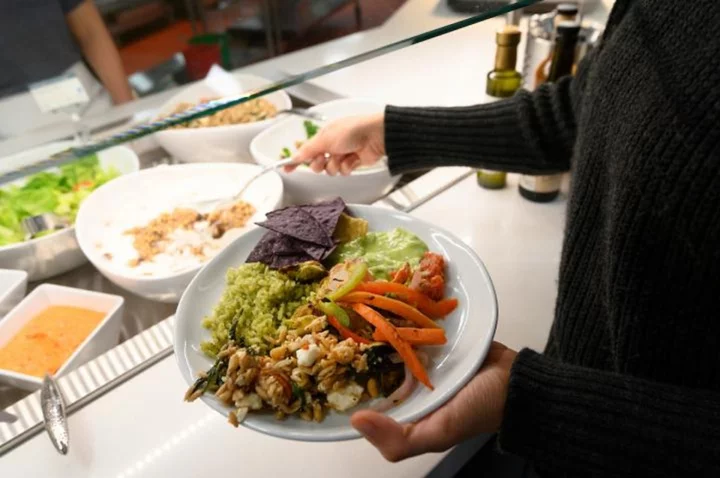
Being vegetarian may partly be in one’s genes, study finds
A person’s genetic makeup can play a role in determining whether they can stick to a strict vegetarian diet or not, according to a new study. The research, published on Wednesday in the journal PLOS One, may lead to further studies on personalised dietary recommendations and the production of meat substitutes. While a large fraction of people self-identify as mainly “vegetarians”, they also report eating fish, poultry and/or red meat, suggesting there may be environmental or biological constraints that override one’s desire to adhere to a vegetarian diet, said scientists, including those from Northwestern University in the US. “It seems there are more people who would like to be vegetarian than actually are, and we think it’s because there is something hard-wired here that people may be missing,” study co-author Nabeel Yaseen said. In the study, researchers compared UK Biobank genetic data from 5,324 strict vegetarians – consuming no fish, poultry or red meat – to 329,455 controls. Scientists found three genes linked with vegetarianism and another 31 genes that are potentially associated. Several of these genes, according to the study, are involved in lipid (fat) metabolism and/or brain function including two of the top three (NPC1 and RMC1). “My speculation is there may be lipid component(s) present in meat that some people need. And maybe people whose genetics favor vegetarianism are able to synthesize these components endogenously,” Dr Yaseen said. “However, at this time, this is mere speculation and much more work needs to be done to understand the physiology of vegetarianism,” he said. While vegetarianism is increasing in popularity, vegetarians remain a small minority of people worldwide, with 2.3 per cent of adults and 1.9 per cent of children in the UK identifying as vegetarian. Scientists believe the driving factor for food and drink preference is not just taste, but also how an individual’s body metabolises it. Citing an example, they said when trying alcohol for the first time, most people would not find it pleasurable for the first time, but develop a taste because of how alcohol is over time. “I think with meat, there’s something similar. Perhaps you have a certain component – I’m speculating a lipid component – that makes you need it and crave it,” Dr Yaseen said. “While religious and moral considerations certainly play a major role in the motivation to adopt a vegetarian diet, our data suggest that the ability to adhere to such a diet is constrained by genetics,” he said. Scientists hope future studies will lead to a better understanding of the physiologic differences between vegetarians and meat eaters. They said such an understanding would enable personalised dietary recommendations and to produce better meat substitutes. Read More Six healthy recipes that both you and your gut will love Father sparks debate for giving his son non-vegan food behind his wife’s back From leaf crisps to pudding, India’s ‘super food’ millet finds its way onto the G20 dinner menu
2023-10-05 12:19

Android 14 Is Here: 4 Features We're Excited to Try
The headliner at I/O 2023 was Google's Search Generative Experience, a new AI-driven approach to
2023-10-04 23:51

Thailand Vows Safety for Tourists After Mall Shooting Kills Two
Thailand will take steps to enhance the safety of foreign tourists, official said on Wednesday, a day after
2023-10-04 12:57
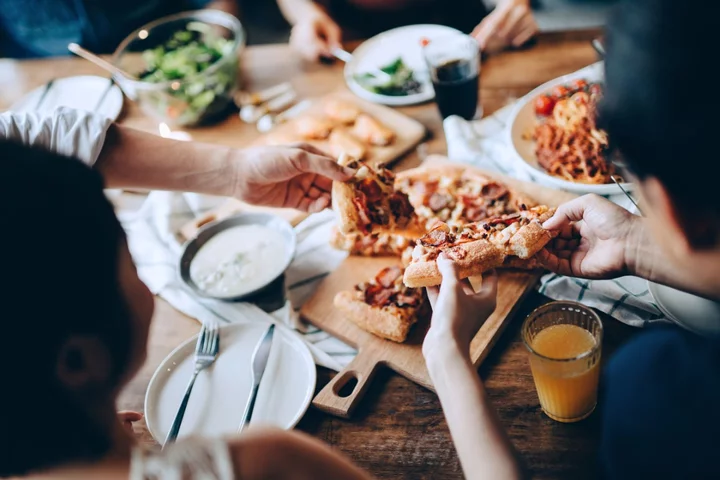
Brits will eat over 5,000 slices of pizza in their adult life, study finds
The typical Brit will munch through 5,208 slices of pizza over the course of their adult life – but 83 per cent have no regrets about the amount they eat. A poll of 2,000 adults found 12 per cent eat up to three pizzas each week – with between 6pm and 8pm being the most popular time to chow down. This equates to an average of £21.40 a month on the beloved Italian classic – or £256.80 a year. In fact, 40 per cent are picking pizza over other meals and snacks with 18 per cent saying they’re likely to reach for a slice over other takeaway treats like kebabs (three per cent) or an Indian takeaway (15 per cent), because it makes them happy (42 per cent). With 57 per cent citing it as their ‘comfort food’. The research, commissioned by Tabasco Brand to celebrate National Pizza Month, also found Friday (24 per cent) and Saturday (21 per cent) are the preferred days to tuck into the dish. A spokesperson for the hot sauce maker said: “Pizza is an easy way to bring people together as the ultimate dish to share with friends and family. “Great for any occasion, the cheesy goodness with an added dash of hot sauce is a great way to light up any movie night or end of week celebration.’ Ordering it to your home (46 per cent) is the preferred location to eat pizza, as opposed to at a restaurant (18 per cent). The study, carried out via OnePoll, also found the nation’s top ‘pizza moments’ are a movie night at home (36 per cent) and after a night on the town (29 per cent). Pizza-lovers are also growing more adventurous, with 48 per cent experimenting with different flavours and toppings, citing combinations like hot sauce and mayo (17 per cent), hot sauce and honey (15 per cent) and hot sauce and queso (13 per cent) as the blends they’re most likely to explore. And when it comes to toppings, mushrooms (37 per cent), mozzarella (37 per cent) and onions (33 per cent) come in the top three – with pepperoni (31 per cent per cent) and garlic (26 per cent) just behind. The spokesperson for Tabasco Brand, which has teamed up with Yard Sale Pizza to allow Londoners to share custom messages to friends and family via its Yard Sale x Tabasco Pizza Post, added: “It’s great to see that people are open to experimenting with some seriously hot combinations. “Pizza is a great medium for this. Its cheesy base counteracts the heat from the hot sauce, allowing people to try out flavours that seem spicier than they’re used to. “Plus, the acidity of the vinegar cuts through the rich toppings, deepening the flavour and taste of the pizza. Together, the combination can light up even the simplest of pizzas.” The best time to enjoy a pizza: 1. A movie night at home 2. On a Friday night after a long week at work 3. When watching sports on TV 4. As a payday treat 5. Getting in after a night out 6. The day you get back from a holiday 7. The day you move house and don’t want to cook 8. As a celebration – like on exam results day 9. Your birthday 10. Leftovers as a treat lunch at work Read More Brits admit they’re ‘clueless’ about art including paintings by Pablo Picasso Brits get itchy feet in their home after five years, study finds The exact time Brits find themselves ‘uncontrollably hungry’ revealed Is there such a thing as British pizza? Jamie Oliver says he’d choose anonymity over fame if given the choice again
2023-10-03 20:15

‘Anonymity is our greatest gift’: Jamie Oliver says he’d choose ‘a normal life’ over fame if given the choice again
Jamie Oliver has claimed he would choose a life of anonymity over fame, if he was given the chance to go back and do things again. The TV chef was interviewed by broadcaster Kirsty Young for her debut podcast, Young Again, which is available on BBC Radio 4 and BBC Sounds. In each episode, Young revisits pivotal moments in the lives of her guests, and asks them what they wish they’d known at the time – along with what they would change if given the opportunity. In the third episode of the podcast, which is out now, Young spoke with Oliver about his rapid ascent to fame aged just 23, following the release of his BBC cooking show The Naked Chef. Oliver, now 45, also discussed what he learnt from a young age working in his parents’ pub, his relationship with wife Jools, and the challenge of balancing his activism and campaigning work with running a business empire. “If you could go back, would you not do it?” Young asks him during the episode. “Definitely,” Oliver responds. “I’m not trying to say ‘shoulda woulda coulda’ but if I came back on Earth and did again, I would go to (set up the) pub, and I would have a normal life and I would be aware that anonymity is our greatest gift that we will never give any currency to. “And to have just enough and to trot on, and to be the best you can at your thing, and be part of a community, and to have a mutuality… That is very very very precious.” Oliver and his wife met when they were 17, and have been together ever since. They have children together. The TV chef’s remarks come not long after his business enjoyed a major boost thanks in part to his work producing shows such as Jamie’s £1 Wonders. The programme achieved an average of 1.4 million viewers as it helped households deal with the cost-of-living crisis by creating cheap and nutritious meals. His empire, which includes TV shows, recipe books, branded products and several lucrative partnerships, along with his numerous franchised restaurants around the world, made a pre-tax profit of £7.7m in 2022, a 17.5 per cent increase on the past year. Sales for the Jamie Oliver Cookery School, which offers cooking classes in London and online, also grew by more than a third last year. Amid a return to the hospitality industry after lockdowns during the pandemic, he also announced the launch of a new restaurant in London’s Catherine Street, scheduled to open in November. Last month, Oliver called for more free school meals help from the government, urging them to “put children’s health first” and widen the eligibility. Under current rules, only children from households with an income below £7,400 – after tax and benefits – are eligible. Following a major campaign by The Independent,London mayor Sadiq Khan has pledged to roll out free primary school meals to all pupils in the capital in a year-long pilot. The first three episodes of Young Again, the new podcast from Kirsty Young, are available now on BBC Sounds. Future episodes will be broadcast weekly on BBC Radio 4 at 11am from 3 October. Read More Jamie Oliver’s businesses notch up higher profits after £1 Wonders TV success Jamie Oliver calls for vulnerable children to be given free school meals Tom Kerridge: Free school meals should be part and parcel of education Is there such a thing as British pizza? Three recipes from Michel Roux’s new fuss-free French cookbook How to cook to keep your gut healthy
2023-10-03 18:46

France Bird Flu Vaccine Plan Risks Spooking Foie Gras Lovers
France is starting to vaccinate millions of ducks to rein in bird flu outbreaks in one of the
2023-10-03 18:26
